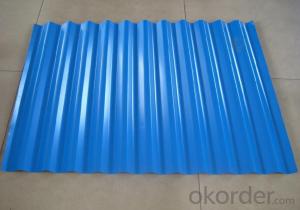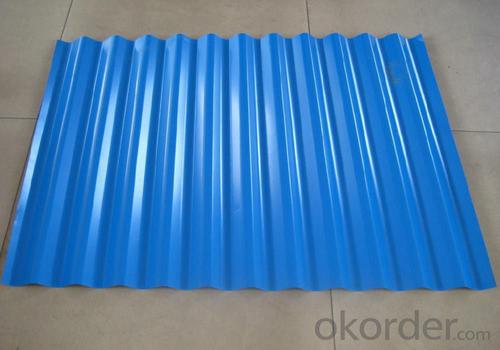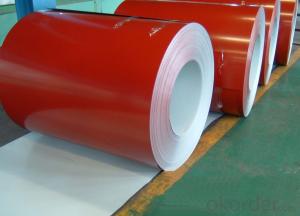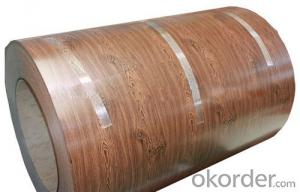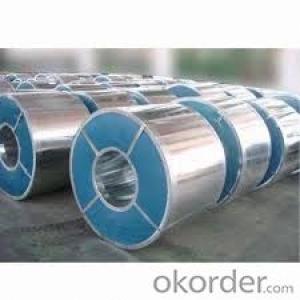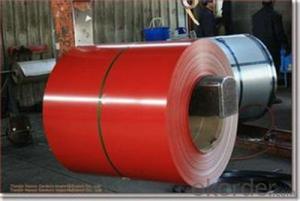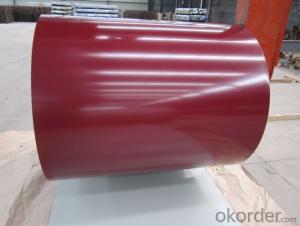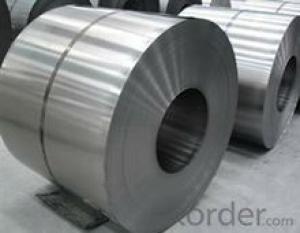color coated galvanized steel Rolled coil
- Loading Port:
- Shanghai
- Payment Terms:
- TT OR LC
- Min Order Qty:
- 30 m.t.
- Supply Capability:
- 300000 m.t./month
OKorder Service Pledge
OKorder Financial Service
You Might Also Like
Specification
Size | Thickness | 0.18-2 mm ,all available . |
Width | 40—1250mm, Steel Strips; 600—1250mm,Steel Sheets. | |
Length | Coil:Ususl weight of coil is 3-8tons Sheet:600-11000mm ,all are available. | |
Standard | AISI,ASTM,GB,JIS,Etc | |
Material | DX51D/52D/53D ;DC01/02/03 | |
MOQ | 20 Tons For Each Size And Each Color | |
Paint Specification | 1. Thickness: ≥20μm 2. Pencil Hardness: 2H 3. 60° specular glossiness of coating: >60 4. 180°bend: ≤3T 5. Impact: ≥9J 6. Salt Fog Resistant: ≥500h 7. Color difference:<0.8δe< span=""> | |
Coil Info | Coil ID | 508/610 mm |
Coil Weight | 3-8 Tons For Each Coil/Sheet | |
Coating (Zinc&Color)
1.Zinc Coating: As usual ,the zinc coating is 50-60g/m2 ,The range will be 40-275g/m2 .
2.Color: Done as the international RAL color chart ,and can also done as customers' color sample .
3.Painting: Front Painting:15-25 μm
Back Painting:5-10 μm
Features of Prepainted Steel Coil :
1) Excellent corrosion resistance: The zinc layer provides a good protection of Pre-painted Galvanizeed Steel Sheet.
2) High heat resistance: The reflective surface of the material aids in efficiently reflecting the sunlight away and in turn reducing the amount of heat transmitted. The thermal reflectivity converts into energy savings.
3) Aesthetics: Pre-Painted Galvanized steel sheet is available in plethora of patterns and multiple sizes as per the requirements that given by our customers.
4) Versatility: can be used in the various areas.
- Q: We just installed a stainless steel electric stove, what is the best way to keep it clean and shiney?
- Contact a sanitary supply company for a product to maintain stainless steel.
- Q: How are steel coils used in the production of HVAC ductwork?
- Steel coils are commonly used in the production of HVAC ductwork due to their durability and strength. The coils are typically made of galvanized steel, which provides protection against corrosion and extends the lifespan of the ductwork. The manufacturing process begins with the steel coils being unrolled and cut into the desired length. The coils are then fed through a machine that shapes the steel into a rectangular or round duct form. This shaping process can be done using various techniques such as roll forming or press braking. Once the steel has been formed into the desired duct shape, it is then joined together using various methods such as welding or locking mechanisms. Welding is often used for rectangular ducts, while locking mechanisms like snap locks or Pittsburgh seams are commonly used for round ducts. These joining techniques ensure that the ductwork is secure and airtight. After the ductwork has been assembled, it may undergo additional processes such as insulation or lining. Insulation helps to reduce heat loss or gain, while lining can improve the acoustic properties of the ductwork. These additional steps are often done to meet specific requirements or regulations. Overall, steel coils play a crucial role in the production of HVAC ductwork as they provide strength, durability, and protection against corrosion. The versatility of steel allows for various shapes and sizes of ductwork to be fabricated, making it a popular choice for HVAC systems.
- Q: How are steel coils used in the production of storage racks?
- Steel coils are used in the production of storage racks as they serve as the primary raw material for manufacturing the rack components. These coils are typically cut and formed into various structural shapes, such as uprights, beams, and crossbars, which are then assembled to create the storage rack system. The strength and durability of steel make it an ideal material for supporting heavy loads, ensuring the stability and longevity of the storage racks.
- Q: How are steel coils used in the production of electrical appliances?
- Steel coils are used in the production of electrical appliances as the core material for transformers and motors. The coils are wound around an iron core to create electromagnetic fields that enable efficient energy transfer and power generation within these appliances.
- Q: How are steel coils inspected for surface cleanliness?
- Steel coils are inspected for surface cleanliness through various methods such as visual inspection, magnetic particle testing, and ultrasonic testing. These techniques help identify and remove any contaminants or defects that may be present on the surface of the steel coils.
- Q: How does adding carbon to Iron make it stronger? How does steel look the molecular structure in comparison to Iron? looking for a very scientific answer =]
- Cast Iron' is typically brittle, while 'Maleable Iron' has a small percentage of carbon which allows it to be hammered and formed. Steel is an alloy that consists mostly of iron and has a carbon content between 0.2% and 2.1% by weight, depending on the grade. Carbon is the most common alloying material for iron. Steel is a crystalline structure of iron molecules interspersed with carbon molecules. This is properly known as cementite. The hardness and malleability of steel depends not only on the carbon content, but on how the carbon and iron molecules are arranged to one another. Internal stresses in the steel's crystalline structure will increase or decrease depending on the temperature it is subjected to and the rate at which molten steel is cooled. This 'tempering' can increase the strength of the steel at the expense of brittleness.
- Q: How does the surface finish of steel coils affect their performance?
- The surface finish of steel coils significantly affects their performance. A smooth and even surface finish enhances the coil's ability to resist corrosion, improves paint adhesion, and enhances the overall appearance of the final product. Additionally, a properly finished surface reduces friction, facilitating better processing and handling during manufacturing. Therefore, the surface finish of steel coils plays a crucial role in determining their durability, functionality, and aesthetic appeal.
- Q: Climbing ropes used by mountaineers are usually made of nylon. Would steel cable of equal strength as the nylon be just as good? What advantages and disadvantages would it have compared to the nylon?
- steel is NOT as flexible and much slipperier if you fall the nylon stretches to slow the victim but a steel cable would stop short and kill you
- Q: What is the role of steel coils in the construction industry?
- Steel coils play a crucial role in the construction industry as they are used to manufacture a wide range of structural components and building materials. These coils are typically made from high-quality steel and are formed into various shapes and sizes to meet the specific needs of construction projects. From reinforcing bars and beams to roofing sheets and wall panels, steel coils provide strength, durability, and flexibility, making them an essential and versatile material in the construction industry.
- Q: hi, i have a steel block with an unussual composition. does anyone know if this is any particular type?c- .6%, si - .33%, mn - .6%, sulphur - .014%, phosphorous - .013%, ni - 1.69%, Cr, 1.07%, molybdenum - .67%
- You have opened a can of worms. Specific types of steel vary not only by composition but by the way they were made, their physical properties and their morphology (microscopic structure). The composition you have given would fit for High Carbon Steel and Medium Carbon Steel. Go to the reference I've given, it allows you to put in 3 of the components of your alloy and then it gives you a list of possibilities. You can open each candidate individually and see the full composition. Hours of fun. :)
Send your message to us
color coated galvanized steel Rolled coil
- Loading Port:
- Shanghai
- Payment Terms:
- TT OR LC
- Min Order Qty:
- 30 m.t.
- Supply Capability:
- 300000 m.t./month
OKorder Service Pledge
OKorder Financial Service
Similar products
Hot products
Hot Searches
Related keywords
